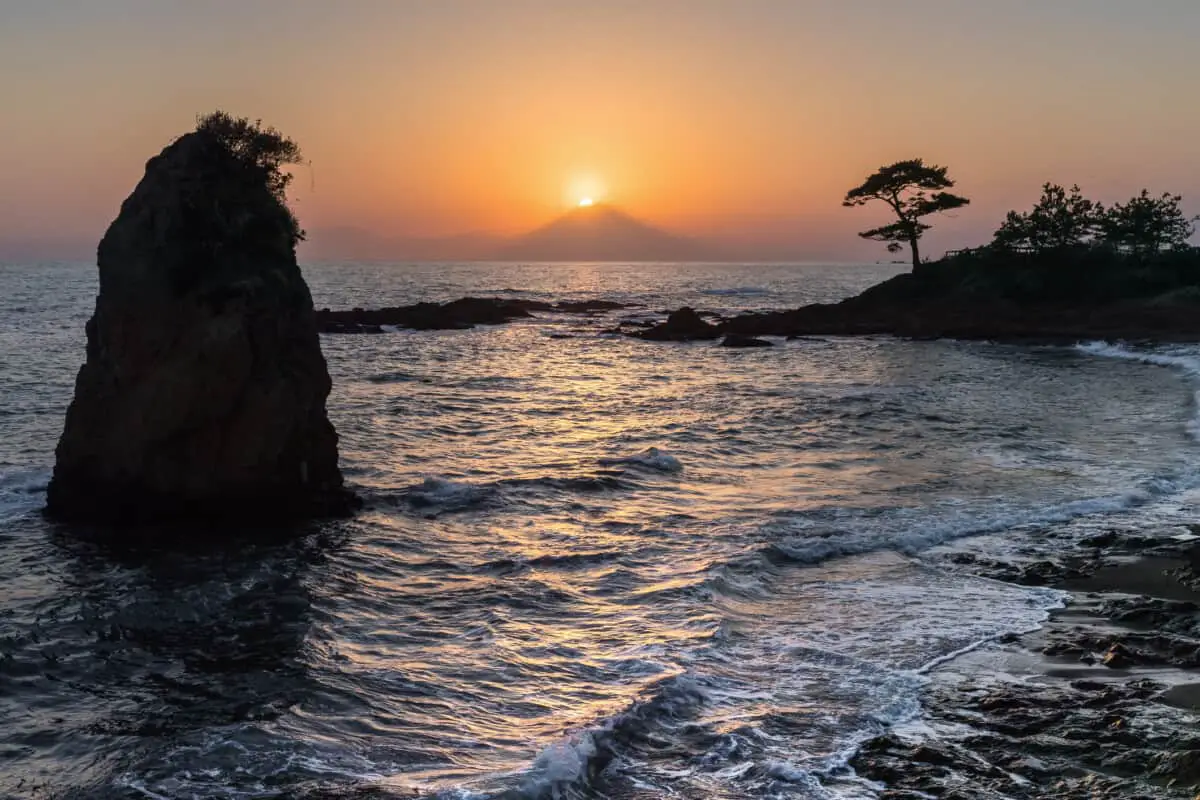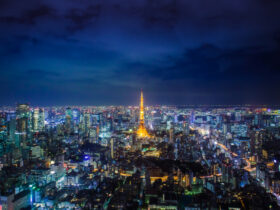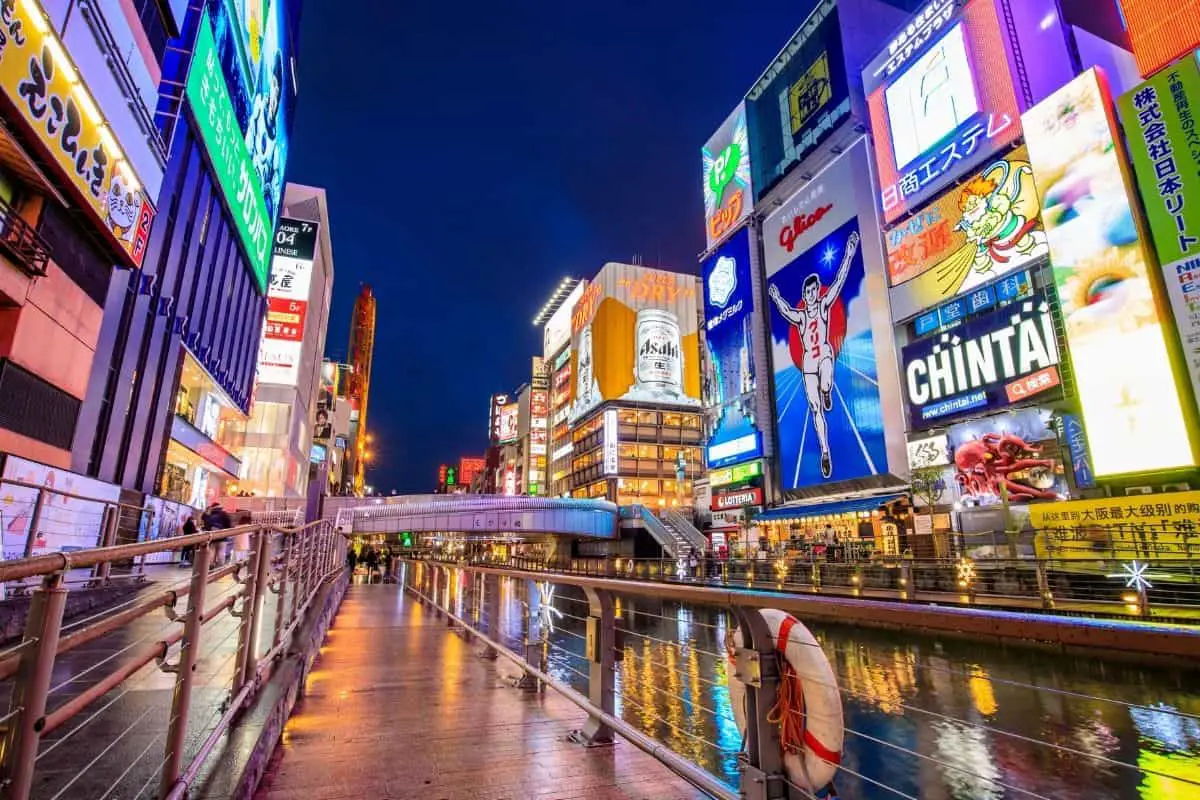Mount Fuji is known for its natural beauty but a spectacular visual effect known as “diamond Fuji” occurs when the sun is rising and setting causing the sun’s rays to look like a diamond.
Whenever people think of Japan typically one of the first images that come to mind is Mount Fuji. Its iconic status both inside and outside of Japan as well as its stunning beauty makes it a wonderful icon of Japan. Many people come from all over to capture images and truly appreciate this work of art in nature.
However, as with many natural sites all over Japan, there are times that are more popular than others with visitors.
Typically these are seasons, for example, viewing the cherry blossoms in spring. However, with Mount Fuji, it is actually the time of day, specifically sunrise and sunset.
What is “diamond Fuji”?
The reason why viewing Mount Fuji is very popular with locals and tourists at sunrise and sunset is because of the amazing visual effect.
From certain angles, the sun either appears from behind the mountain or falls away behind it. In both cases, when the sun hits the top of the mountain it creates a splitting of sun rays that appear to make the mountain look as if it is shining like a diamond.
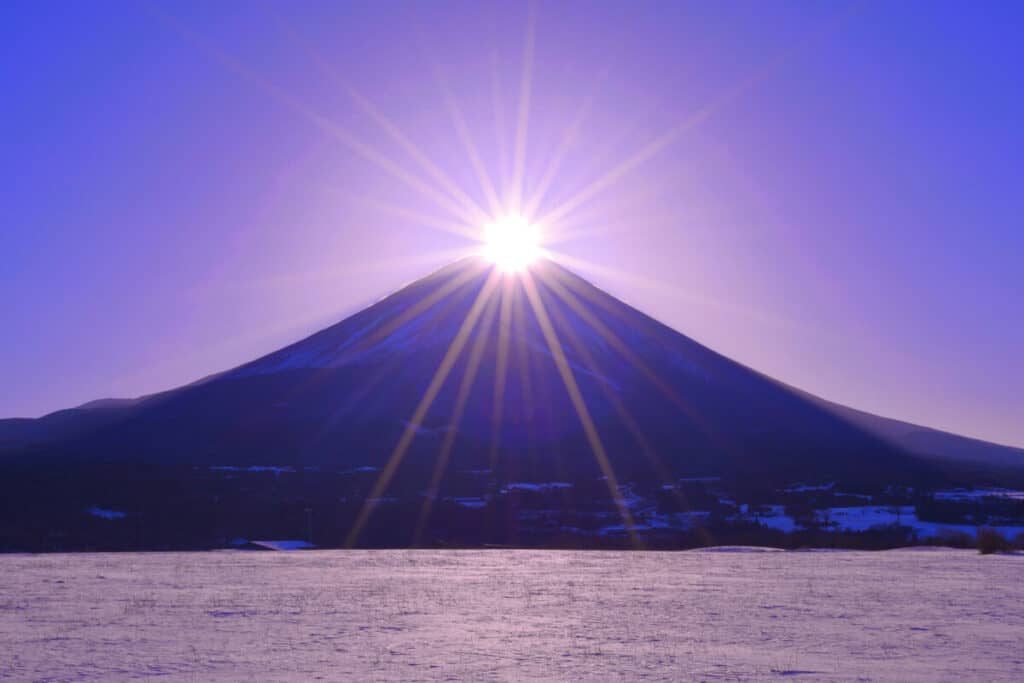
Although diamond Fuji can be seen all throughout the year there are certain viewpoints that are more popular than others, and give you the best view imaginable.
These are particularly popular with photographers and nature experts.
So, if you are happy to view diamond Fuji from the roadside then you can visit at any time of the year. However, if you truly want to bask in the glory of this unique event then consider some of the following times and locations.
Where to see “diamond Fuji”?
There are many places to see diamond Fuji, some in the city and some outside of the city. In any case, the view will be spectacular, but you should consider exactly what times and locations suit your needs.
Skyscrapers
If you are planning to visit Japan at the end of January or the beginning of February or in the middle of November then you can easily ascend one of the many skyscrapers in Tokyo to view diamond Fuji.
There are a large number of observatories scattered throughout the southwest of the city that offer the perfect viewpoint for watching this amazing phenomenon.
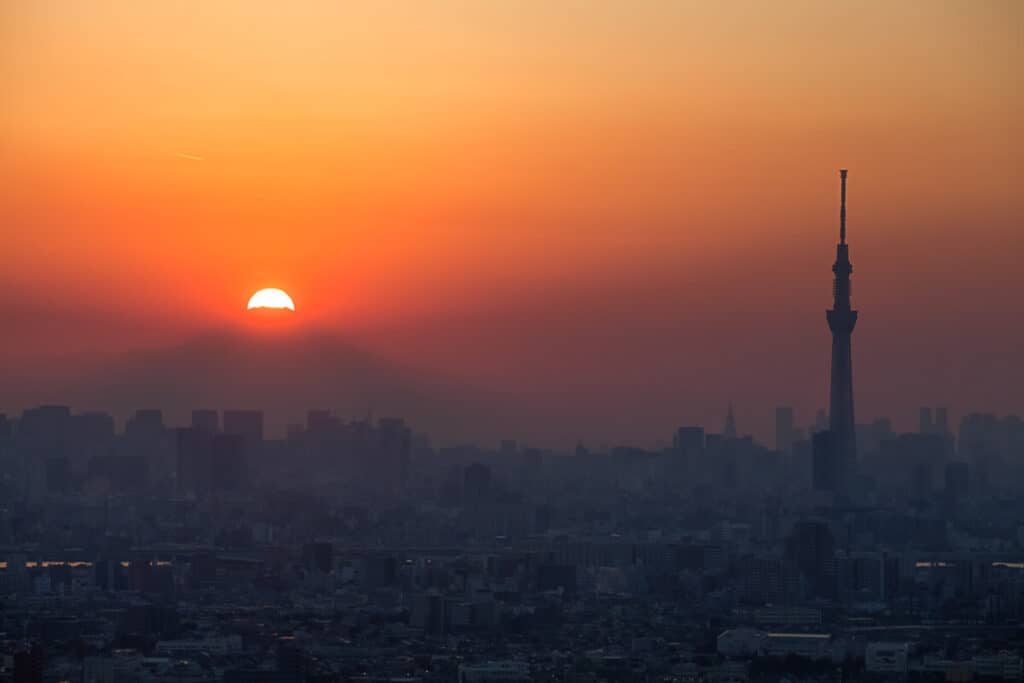
However, at this time of year, you should also consider the weather. If it is a particularly cloudy or rainy day then you have less chance of being able to catch a glimpse of the event. After all, you’ll need a pretty clear day to be able to see the sun setting.
Additionally, the weather around the mountain itself is not always perfect and so it may be good weather in the city but bad weather near the mountain. This will also mean that you are unable to see the event.
For example, two fantastic spots to keep in mind if this is your viewpoint of choice are the Tokyo Metropolitan Government building and the Bunkyo Civic Center. Both of these locations are free of charge.
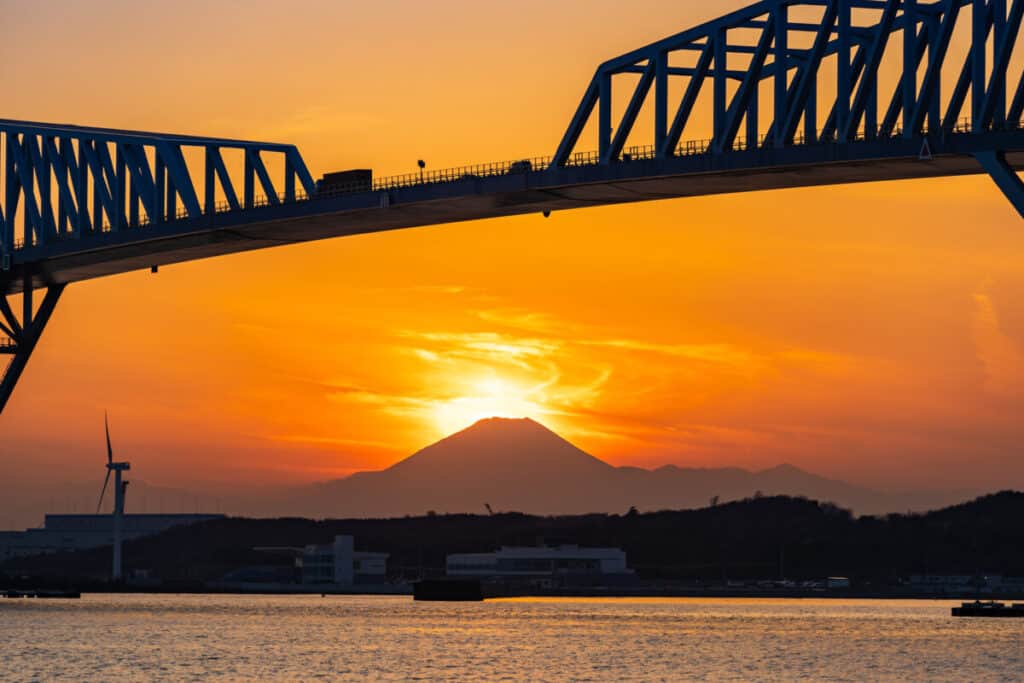
The former will see the event at 4:55 p.m. on the 1st of February and at 4:25 p.m. on the 9th of February and the latter at 4:56 p.m. on the 1st of February and 4:26 p.m. on the 9th of February.
If you are willing to pay for the view of diamond Fuji then consider the following: Sunshine 60, Tokyo Skytree, Tokyo Tower, and the Shibuya Scramble Square building.
The times and dates for these locations are as follows: Sunshine 60 – 4:50 p.m. on the 27th of January and 4:21 p.m. on the 14th of November.
Tokyo Skytree – 5:29 p.m. on the 12th of February. Tokyo Tower – 5:03 p.m. on the 8th of February and at 4:32 p.m. on the 2nd of November. Shibuya Scramble Square – roughly at 5:07 p.m. on the 7th of February.
The Miura Peninsula and the Shonan Coast
If you are prepared to travel a little bit outside of the center of Tokyo then you should head to the Miura Peninsula or the Shonan Coast for some of the most breathtaking views of Diamond Fuji.
The proximity to the mountain here means that you may have better luck with the weather, as there is less chance of your view being obscured by the clouds.
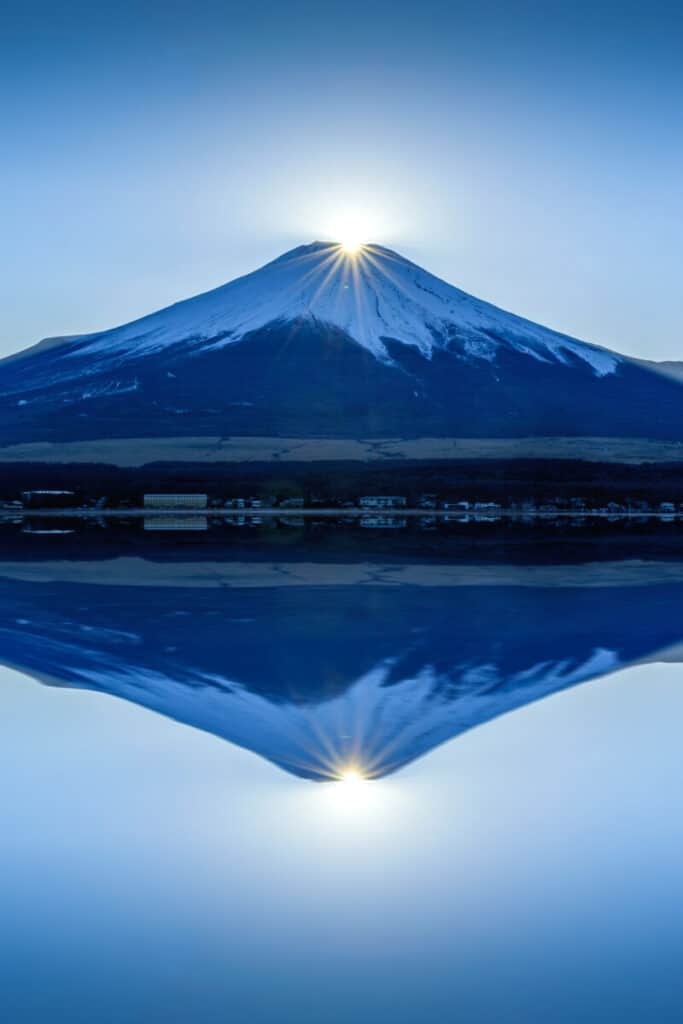
If you are lucky enough to get good weather (meaning a clear, cloudless day) then you will be able to see Mount Fuji in the distance across the water of Sagami Bay.
Additionally, if it is a windless day then at the right angle you will also be able to see the mountain reflected beautifully in the water. It makes the perfect photo opportunity.
To visit this area you will need to be in Japan in the middle of Spring or the end of summer. Given the time of year for these viewpoints, good weather is not always guaranteed. However, if you are visiting shortly after a typhoon then you may be in luck.
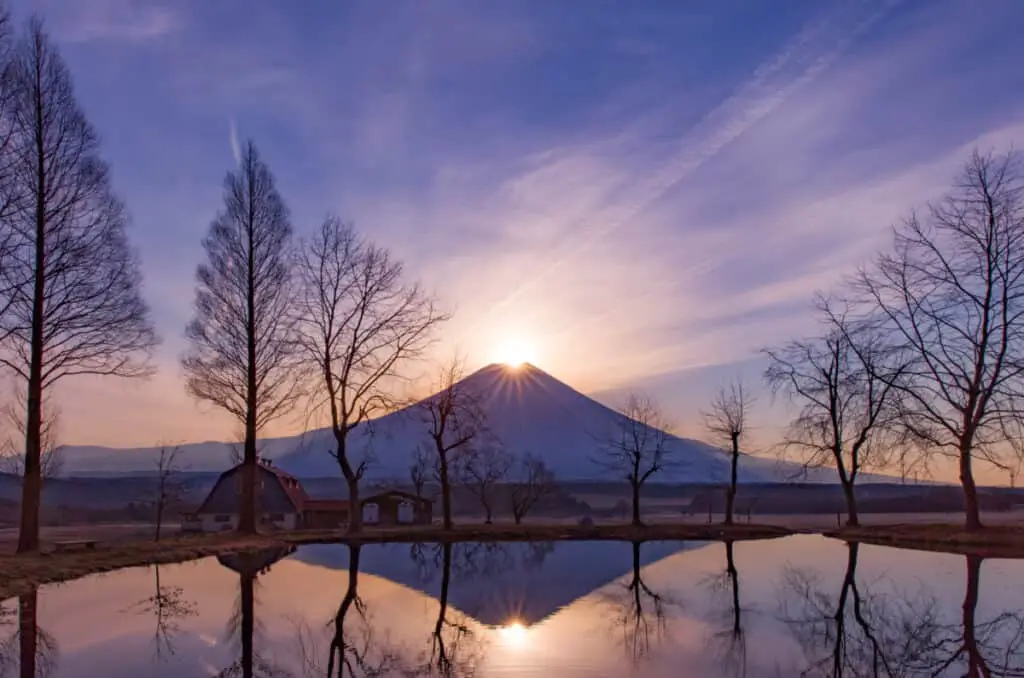
From Shonan, the exact times are between the 4th of April and the 6th of April and between the 5th of September and the 8th of September.
For the Miura Peninsula, the exact times are between the 7th of April and the 15th of April and between the 27th of August and the 4th of September.
The reason why diamond Fuji is visible for a longer period of time at the Miura Peninsula than it is in Shonan is because it runs perpendicular to the horizon.
Lake Yamanaka
If you are after one of the best shots of all of Japan, then head to Lake Yamanaka to capture diamond Fuji.
This lake is one of the five Fuji lakes and because of its sheer size and distance from the mountain, you have a longer period of time to chance to see the event.
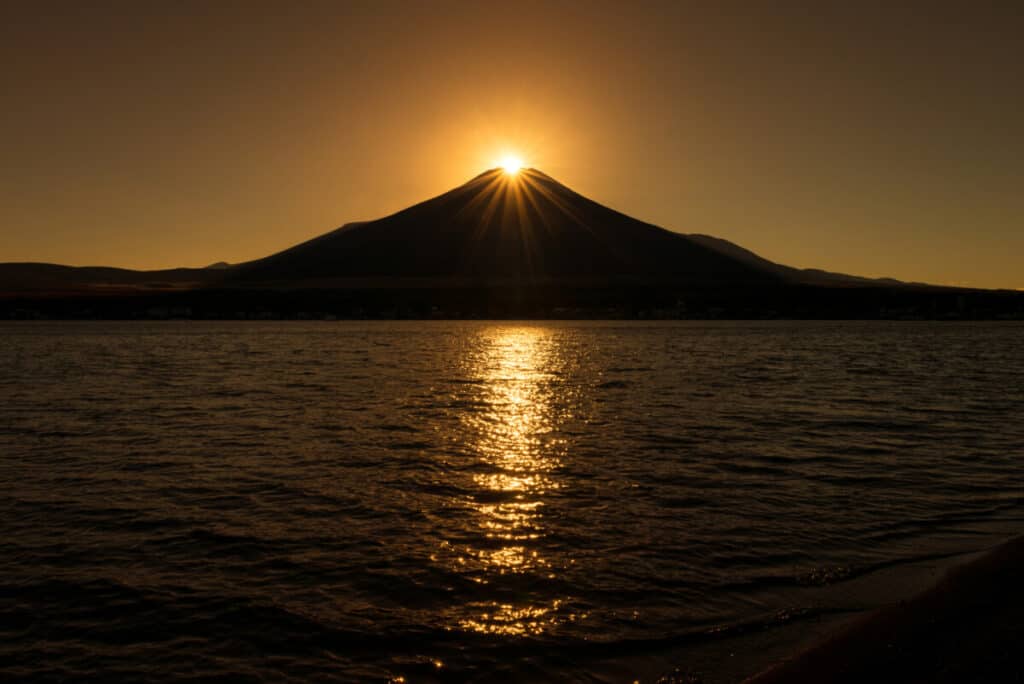
The dates to see diamond Fuji are between the 18th of January and the 20th of February and between the 25th of October and the 25th of November, giving you a much larger timeframe to visit than many of the other popular spots.
At the beginning of the year, you will have the chance to see the mountain covered in snow, and at the end of the year, you will be able to capture the beauty of autumn here.
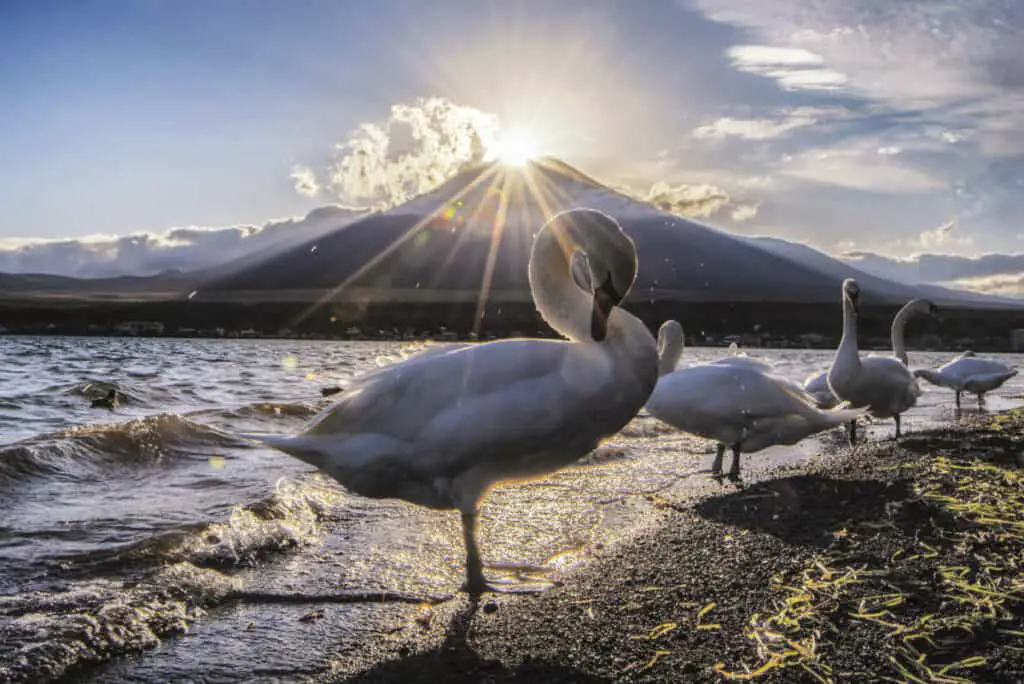
You should consider the perfect image of Mount Fuji for you before deciding which time of year to visit.
One of the main reasons why this spot is so popular for viewing diamond fuji, especially if you want to take a photo, is because the mountain reflects in the lake.
This means that with the right weather conditions, i.e. not windy and clear, you can capture a double diamond Fuji.
If you do not have a car with you then you can still easily reach this viewpoint by public transport.
There are buses running from Tokyo Station and Shinjuku daily and the trip will take less than a grand total of two hours. The fare will roughly cost you $17 USD each way.

